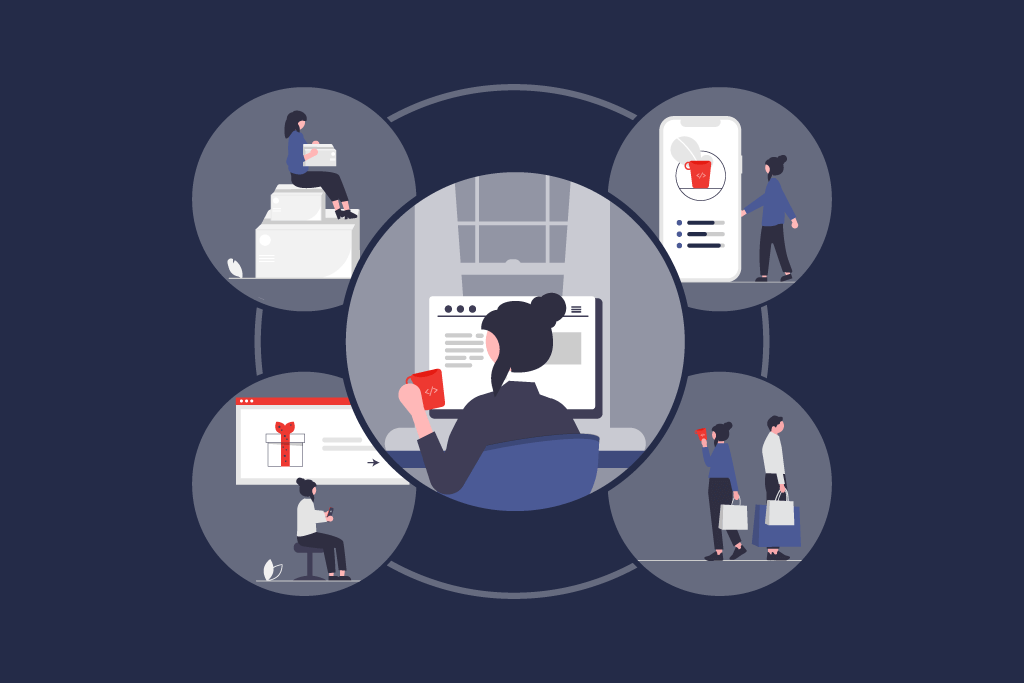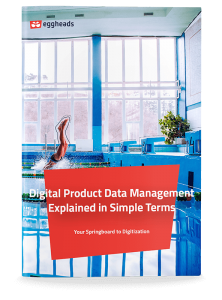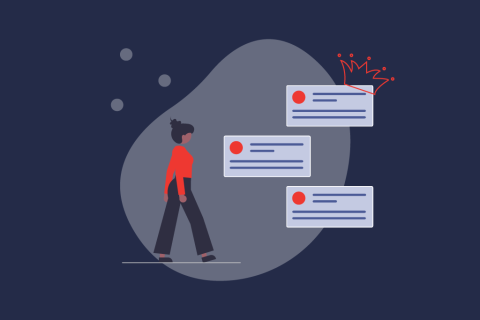Marketing
Omnichannel Marketing in B2B and B2C

Content
What is Omnichannel Marketing?
Omnichannel marketing is the marketing strategy that connects all sales channels. The advantage of omnichannel marketing commerce is that customers can enjoy a smooth purchase experience and can continue this experience as they move from one channel to another – without any contradictions, inconsistencies, or gaps – thanks to the integration of the various sales channels.
This, then, is how omnichannel marketing connects all channels, both online and offline. This includes the following:
- Online shops
- Online marketplaces
- Stationary stores
- Social media channels
- Mobile apps
- Product portals
- E-mail newsletters
In the process, omnichannel marketing makes use of a wide range of marketing measures such as target-oriented advertisement, personalized e-mail marketing, recommendations, both cross-selling and-up-selling, while also accompanying and supporting target groups throughout each and every stage of their customer journey.
Multichannel vs Omnichannel: What’s the Difference?
In multichannel marketing, the individual channels are kept separate. In omnichannel marketing, to the contrary, companies market their products and services across various interconnected channels, thereby offering customers a consistent sales experience. This boosts customer satisfaction and, at the same time, increases the customer retention rate.
How can Companies Profit from Omnichannel Marketing?
The purchase behavior of both end customers and companies has continuously evolved towards digital apps. Where there used to be only a few established channels operating independently from one another, you can nowadays choose from many more touchpoints. Reaching out to the customer across the whole customer journey – both in a digital and analog manner – with consistent data, this is what poses a major challenge. Mastering this challenge will translate into enormous benefits for your marketing team.
An omnichannel strategy provides the following benefits and more:
- Boosted Customer Satisfaction: Omnichannel marketing enables a smooth user experience for customers, allowing them to come into contact with a company through various channels. In the process, customers can choose for themselves which channel they want to use to buy products or inform themselves about a brand. This allows for a consistent brand presence and a uniform product message.
- Higher Sales: By offering their products and services on many channels, companies can increase their outreach and address potential customers in diverse ways. This enhances the sales potential and the company can generate more profit.
- Increased Customer Retention: The option to connect to various channels makes it easier for customers to make direct contact and forge a personal bond with the company. This can translate into stronger customer retention since it will be easier for them to stay in touch with the company.
- Effective Data Analysis: Using different channels, marketing teams can collect data from various sources, e.g. transactions, behavior patterns, or feedback. With a thorough analysis of this well-bundled data, companies can gain valuable insights into the behavior of the target groups across the whole customer journey – and improve both their strategies and offers on this basis.
- Simple Scalability: The optimal realization of an omnichannel strategy comes with the centralization of product information. This data foundation can be built upon when connecting new marketing channels, hereby skyrocketing your efficiency.
All in all, omnichannel marketing provides you with the possibility to directly address your customers’ needs and wishes, bolster your marketing presence, and increase your profit.
Examples for Omnichannel Marketing in B2B and B2C
In general, omnichannel marketing is relevant for both B2B and B2C alike. A small difference, however, results from the often times more complex purchase process for B2B customers. Given that this involves a large number of decision markers, B2B comes with longer approval and purchase periods. Especially when it comes to high-cost products, multiple stakeholders with individual requirements are to be convinced of the product. Besides this, the strategies differ only by relevant touchpoints, depending on your industry and target group.
B2B Example: Touchpoints of buyers and sellers when purchasing a heating system
- Website (buyer)
- Wholesale store (buyer)
- App as product portal (buyer)
- BIM system (buyer)
- ERP system (buyer)
- Service portal (seller)
B2C Example: Touchpoints when purchasing a cupboard for an end customer with the help of the service portal
- Product flyer (end customer)
- Social media ad (end customer)
- Online shop (end customer)
- Product configurator (end customer)
- Service portal (service personal)
Why is Product Data so Relevant for the Omnichannel Approach?
Product data is highly relevant for the omnichannel method since this is what forms the foundation for consistent content and a uniform product presentation. Contradiction-free product information across all sales channels is the fundamental requirement for a successful omnichannel approach.
When the product data isn’t identical throughout the entire customer journey, it can easily cause confusion for customers and, consequently, damage their trust in the company. This, in turn, can translate into a loss in sales. A consistent presentation of your products across all channels, to the contrary, assures that your customers will be able to view the product with one and the same set of information in all channels and, with that, enjoy a continuous sales experience.
So, when a company wants to implement omnichannel marketing, it’s important that the product data is always consistent and up to date. For this reason, Product Data Management should enjoy a higher priority to guarantee a successful customer experience.
What Software Tools are Indispensable for the Success of Your Omnichannel Strategy?
For the successful implementation of an omnichannel strategy, it takes the interplay of different software solutions such as PIM, CMS, ERP, CRM, and DAM systems. However, product configurators, apps and corresponding shop systems also play a decisive role. Additionally, the integration of AI-based tools does also play a crucial factor. The IT infrastructure and the selection of fitting tools from the “MarTech Stack” are game changers.
Since consistent product communication across all channels is a strategic point in omnichannel marketing, the PIM system occupies a central role in this case. Here, your product data is centralized, enriched with content, and, finally, distributed into various marketing channels.
Both product data and customer data are imported into the PIM by connecting ERP and CRM systems. Images and videos, on the other hand, are provided by directly integrated DAM modules or via a separate DAM system. For content creation and translation, PIM offers AI-based content automation tools and translation management systems with translation memory function. Target systems include the connected online shop, product configurators, apps, social media channels, or external e-commerce platforms such as Amazon or eBay, where products are made available to the customer.
Only when all these systems communicate with one another in a smooth manner, a successful omnichannel strategy can unfold itself for delivering a first-class customer experience.
From Our Blog
You may also be interested in the following articles








